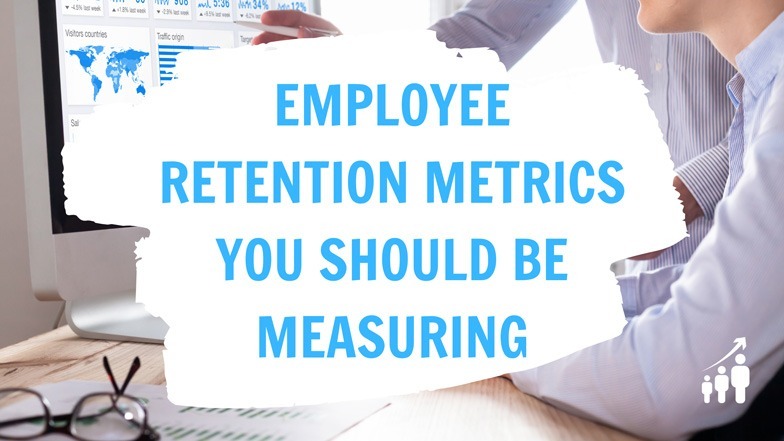What Is Employee Retention
Employee retention refers to the ability of an organization to retain (keep) its employees. Companies display their employee retention in a simple statistic, others talk about employee retention as a human resource strategy and constantly evolving campaign to retain their best staff. Human Resource professionals and managers play an important role in ensuring the success of a company or organization’s employee engagement initiatives. General talent management initiatives and development can set a company up on the right track for keeping their best employees engaged and invested. Employee engagement and retention is influenced by workplace culture, organizational communication and managerial styles.

– What Goes Into Employee Retention
Forming an employee retention strategy touches multiple facets of your organization. Employee engagement and satisfaction is one of the most obvious because employees who love their jobs are less likely to quit. You need to consider everything from compensation, professional development opportunities and the overall strength of the economy.
Employee retention can become complex and finding the right metrics to measure is the best way to see it simply.
– Why Employee Retention Matters
Why is employee retention an HR strategy? Because losing employees is expensive. Recruiting and training new talent too often leads to expensive onboarding processes, and high turnover doesn’t look good for a company’s culture. High turnover is a symptom of deeper issues including low employee morale, lack of recognition, poor employee-manager relationships, and lack of career advancement… the list goes on. Retaining your best talent benefits the growth of your company over time and brings immense value to your business.
As we mentioned, high turnover is expensive. Retaining your current employees reduces the costs associated with recruiting, time, and effort it takes to train a new starter. EBN (Employee Benefit News) estimated in 2017 that it costs around 33% of a worker’s annual salary to replace them, meaning you could be paying nearly $15k per employee making a $45k salary. If you have a high turnover rate, that cost really starts to add up. More concerning is the potential loss of productivity. Did you know that companies with high turnover rates lose, on average, $120,000 per lost employee? Not maintaining healthy retention is bad for your culture, as well.
– The Importance Of Data In Employee Retention
Retaining employees didn’t always rely on metrics, but, things have progressed. Data plays a role in nearly every company strategy, and especially Human Resources employee retention plans. We now have access to a wide range of new technologies and data measuring capabilities to figure out how likely an employee is to leave, stay, etc.
Categories you want to focus on include:
What’s Happening: Employee Turnover and Attrition rate are two of the most basic employee retention metrics. This basic reporting can tell you a retrospective view of what exactly is going on in your company’s retention rates.
Why It’s Happening: Figuring out WHY your employee turnover is high, isn’t as easy as to figure out. Trying to determine the exact cause of your turnover is different from finding the numbers alone. While it isn’t easy, it’s still necessary to learn. If your company experiences high turnover rates, trying to pin down the “why” is essential to finding the solution. Are you paying enough? Is morale low? How’s your company culture? The sooner you figure out why, the better.
What’s Happening Next: None of us are mind readers, or fortune tellers, so regardless of your field or industry, finding out “what’s next” isn’t easy, either. Thankfully, with data, you can determine when employees are at risk of departing your company. If you lack professional development opportunities, that could be a key reason employees are leaving. Have your employees not used their vacation? Burnout could be around the corner. Measuring metrics around your benefit usage is a good way to indicate what’s about to happen next.
– What Matters When It Comes To Setting Employee Retention Metrics
Low Employee Retention Is Bad… but so is holding on to everyone.
That’s right… keeping ALL your employees isn’t always good, either. It leaves less room for your newer employees to grow and develop. Having a high retention rate can indicate a lack of dynamism in the workplace, where employees are so comfortable, they aren’t growing and moving. Maybe they aren’t motivated enough to pursue more senior roles, which likely means they aren’t improving their skills and putting in that extra effort – which you always want!

Onboarding Matters
The first few weeks of a new hired employee are essential to retaining them long term. Did you know ⅓ of new hires quit within 6 months? Well.. that also means 2/3rds knew in the first few weeks that they were staying with the company long-term. Now is the time to evaluate your onboarding strategy and make your new hires are set up for success.
Tighten up Management
Getting company wide feedback and metrics are important. You need to be able to drill down at a micro-level to see what is going on and where. This is where your managers come in. Have you ever heard of “employees don’t leave bad jobs, they leave bad managers?” This applies to employee retention.
All Departures are not made the same
It is never fun to lose an employee but we all know some employee departures hurt more than others. Top quality performers at every level of your organization need to be cared for. Losing a top performing employee has a larger impact on your bottom line.
Voluntary Vs. Involuntary
Unfortunately, not all employees leave because they wanted to. Sometimes layoffs happen. Sometimes people are fired. Both voluntary and involuntary departures have a negative impact on an organization but that doesn’t mean they are the same. Voluntary departure shows issues with how an employee was treated whereas involuntary departure suggests issues in your hiring process. When setting up metrics, you want to ensure you can distinct between voluntary and involuntary turnover.

– Employee Retention Metrics you Should be Watching
- Employee Happiness
- This is a key factor to whether or not your employees are sticking around. How each company, or even department, mesaurses it is up to them. Consider a survey that is shared routinely where the results are anonymous. Maybe you create a custom metric to encapsulate multiple factors depending on your business. Find a way to gauge employee satisfaction.
- Voluntary/involuntary Turnover Rate
- We just talked about this one, but you need to track both voluntary and involuntary turnovers so you can pinpoint where problems are originating. A high voluntary turnover rate may suggest your employees are not happy. Whether it’s compensation, culture or professional development. High involuntary turnover suggests problems with your hiring. Why are we hiring people who didn’t fit? Employee experience in your hiring process affect BOTH of these metrics, but distinguishing them can help you pinpoint exact issues.
- Talent Turnover Rate
- Knowing the general turnover rate of your talent is valuable however, it doesn’t tell you something important: How valuable were the employees who just left?
This rate helps you answer a key question: Are your most talented employees leaving? If the answer is yes, you have a big problem. If not, then this issue might not be as bad as originally thought. It does require additional work and effort to evaluate how much value each employee brings, but it’s worth it in the end.
- Knowing the general turnover rate of your talent is valuable however, it doesn’t tell you something important: How valuable were the employees who just left?
- New Employee Satisfaction Rate
- You will want to find the perfect way to measure how employees who have been at your company for 6 months or less are feeling. If they aren’t fitting in, feeling satisfied, or excited about the work – you’re looking at bigger issues ahead. Measuring new employee satisfaction will help pinpoint and change those issues.
- Retention Rate Per Manager
- If you have a high turnover rate with a particular manager that is certainly a sign that something is wrong. If you don’t investigate that number will stay the same, or worse, increase. Finding managers with low turnover rates might be able to give lessons on building successful employee retention tactics that can be applied throughout your organization.
How do you measure employee retention? What is a good employee retention rate?
It’s vital to give as accurate and data-driven number as you can for your retention rate. Divide the number of employees that have stayed for the whole time period by the number of employees at the start of that time period, then multiply by 100 to get the percentage.
Average retention rates are going to vary across your industry and job types. Example: Retail and Restaurant sectors tend to have a lower retention, but that’s to be expected. It’s worth researching into your specific industry to find out exactly where your goals should lie.
Your ideal retention rate is defined by factors that are specific to your business, like the company’s past recond, and internal promotion rates.
Conclusion
Turnover in itself is not harmful to a business, but low retention rates can cost hundreds of thousands, if not millions, a year and are incredibly hurtful to businesses. To achieve better employee engagement and retention, it really boils down to better communication. HR leaders and managers should be staying in touch with their employees on a weekly or biweekly basis, this way feedback is consistently received. Remote communication includes emailed newsletters, routinely updating and informing employees on new initiatives, and sending out routine surveys.
Implementing your own talent management strategy to increase employee engagement and retention is essential to company success. Companies must foster an environment where employees are actively engaged, and encouraged by the company from day one.
Data has changed the world of employee engagement and retention. Following metrics with action can change how your business operates. Human Resource professionals and managers don’t have to guess how they are keeping top employees, they can get an exact picture into what’s happening, why it’s happening, and what’s going to happen next.
If you are interested in implementing any of these strategies into your business but need help, we’re here to help. Contact us today.





